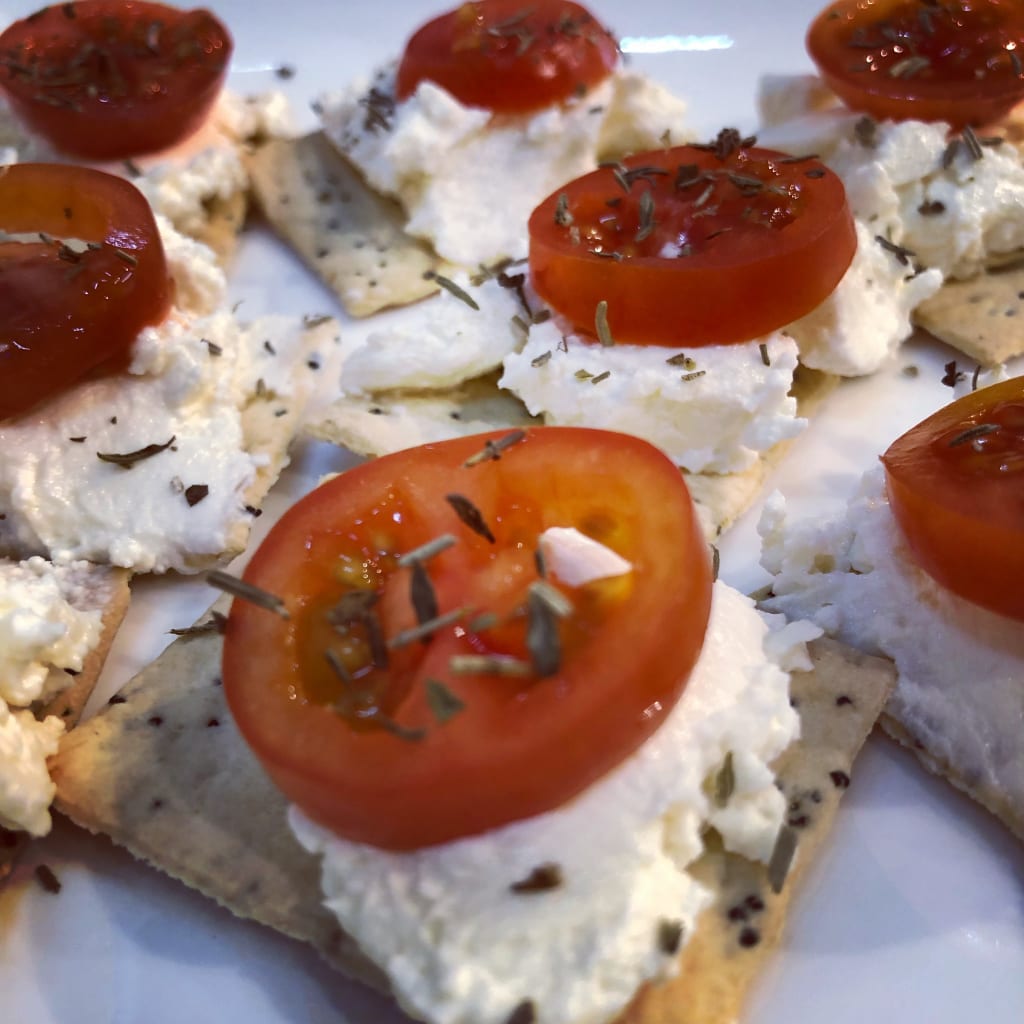Labneh (Yoghurt Cheese)
A simple and delicious snack.

Labneh is a cheese made from yoghurt that has been strained to remove the whey, and is one of the easiest to make. All you need is some milk and some yoghurt culture, and you're on your way. Traditional labneh has the addition of a hint of salt, but you can also add a little garlic as well. Labneh is made from cow's milk, is tangier and creamier than yoghurt, and is meant to be eaten as a savoury food. You could try spooning dollops of the labneh into a marinade of oil, lime zest, garlic, and peppercorns (keeping it in oil is a good way to preserve it as well - refer to the storage note below), or you can use it as a spreadable cheese on crackers for a nice snack. Personally, I have a tendency to just eat it with a spoon, but that's just me.
Like many other foods, there are several variations of labneh that come from different regions of the world, such as Asia, Europe and the United Kingdom, and one day when this pandemic thing is over and we can all travel freely again, I'm going to try them all.
Below is the recipe that I'd like to share. You'll need to allow a couple of days from start to finish to wait for the yoghurt to be made, as well as hanging the curd etc, but I promise you that it will be totally worth it. It's much easier than you think, and to me, making this, or any other cheese is such a satisfying experience, and at the end of it, you're getting something that's freshly made and delicious.
Prep: 5 mins
Cook: 48 hrs including Incubation & Hanging Curd
Equipment
-Yoghurt Maker
- 1 Litre Plastic Container
- 'DROP' Measuring Spoon (1/16th tsp)
- Colander
- Flat Wooden Spoon or Spatula
- Cheesecloth
- 2 Litre Container
Ingredients:
- 1 Litre UHT Full Cream Milk
- 1/16th tsp "DROP" Yoghurt Culture (Probiotic)
- Non-iodised Salt, optional
Method
Step 1.
Pour milk into the 1 litre container.
Step 2.
Using the 'DROP' measuring spoon, add the yoghurt culture and mix well, (be careful not to add too much as it won't allow the yoghurt to set properly).
Step 3.
Incubation - Put container in the yoghurt maker and turn on. Leave to incubate for 18 - 24 hours.
Step 4.
Remove the container from the yoghurt maker and place in the fridge to chill for approximately 4 hours.
Step 5.
Transferring the curd - empty the contents of the container into a colander that's been lined with a damp muslin cheesecloth. Optional - add approx. 1 teaspoon of the non-iodised salt, or to taste.
Step 6.
Hanging the curd - let the curd sit for 5 minutes, then take the corners of the cloth and tie them on the flat wooden spoon or spatula. Hang the spoon in a 2 litre container in the fridge for 24 hours. Optional - If you want to make the cheese firmer, you can leave it for another 24 hours. Discard the whey.
*You can purchase the specialty measuring spoons and cheesecloth anywhere that supplies cheesemaking equipment.
Storage
Store homemade labneh in the fridge in an airtight container for up to 2 weeks. To better preserve your labneh, you can form it into balls that are about 1 tablespoon each in size. Place the balls in a large sterilised, airtight jar and pour extra virgin olive oil to cover. Cover the jar tightly and leave at room temperature or in the fridge, if you live in a warm area.
About the Creator
Jess Boyes
From Melbourne, Australia, I love creative writing and food, particularly a good quality cheese or some sort of dairy.






Comments
There are no comments for this story
Be the first to respond and start the conversation.